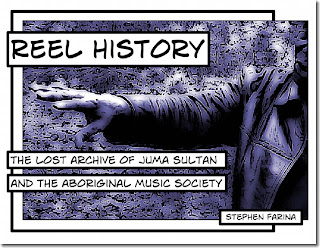Maura Johnston, at the NPR Music Blog, recently wondered about the future of music writing in the digital age, where traditional combinations of generalist coverage and more in-depth "think pieces" are being jettisoned for "legions of sites that dive down cultist rabbit-holes and other sites that attempt to predict what the masses will want to read and share on social media like Twitter and Facebook." Most interesting to me were her insights about the ways that digital audiences engage with writing itself:
I'm not convinced that this distinction, between an older "fluid" reading and newer fragmented "back-and-forth" reading, is as stark as Johnston portrays; readers have engaged with the written word in diverse ways, much of which ignored the intentions of authors, long before the advent of social media--just look at 19th century scrapbooking, for example. Her overall point is not really about whether readers are engaging differently with music writing, however; it is that professional journalists are no longer the arbiters of culture that they once were and might need to rethink their role:The most crucial difference between print and online media consumption boils down to the click. When reading a print publication with multiple stories, your eye could flick over a headline or catchy paragraph and be drawn in; the process of choosing to read something is fluid. Compare leafing through a paper to scanning a stack of headlines, deciding which ones compel you from their brief description, clicking, reading, then clicking back and going through the whole rigmarole again. (There's also a question of scale; the cascade of headlines coming from, say, Twitter or Facebook is magnitudes bigger than that in a typical daily.) "Most Popular" lists on some publications' sidebars allow for a quick way to dive into content, but they often become self-reinforcing, or reward topics that have a predictable payoff.
...From streaming albums to artist tweets to comments in the iTunes Store and beyond — and music writers become just another voice, shouting above the fray to be heard. Turning that chaos into a conversation that spans fans of all genres and artists, and that connects people in surprising ways, should be a goal among writers and editors in 2013.Again, I see the point but am not entirely sure I'm convinced. It is true that social media has expanded readers' access to writing, commentary, and publications in ways that were not possible in the print age, unless you were willing to hang out at a university library for days and weeks, scouring the periodical stacks. (And some of us did). But I wonder whether music writing has ever had the power for listeners that Johnston ascribes to it. Music fans, for instance, were writing to and for each other, outside of conventional media coverage, long before social media; professional music writers have always been "just another voice" for them. Perhaps the issue is not simply one of institutionalized music writing yielding to the clamor of the crowd but rather of the changing quality, size, and scope of clamor from one decade to the next.
All this reminds of a book I should read by Jennifer Lena, called Banding Together: How Communities Create Genres in Popular Music. Sudhir Venkatesh offers an interview with Lena at the Freakonomics blog, where Lena argues that categories of taste and genre are not merely aesthetic but deeply social and contextual and that we need to pay more attention not just to artists and their works but also to the social, political, and economic players--including audiences and music journalists!--that have always defined music. It sounds pretty ethnomusicological to me (I should write about the frustratingly parallel universes of ethnomusicology and cultural sociology another time), but I will withhold comment until I've actually read it.

























